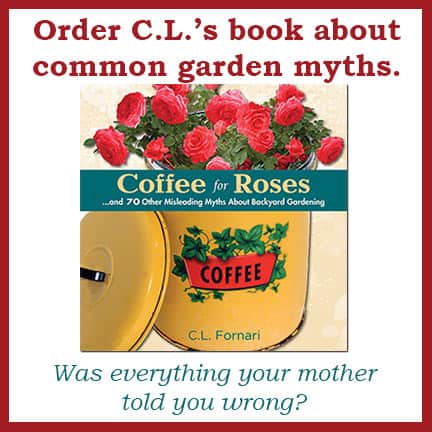I frequently hear my callers on GardenLine saying something similar. “I treat them just the same, they get the same water and the same amount of light…they’re just a couple of feet from each other but they’re growing so differently!” There are several possibilities why this might be the case, and for those of you in similar situations, I’ll list some of those reasons here.
- Actually, the light is different. One plant is shaded by something else and gets more or less sun. (See photo of my Geranium macrorrhizum below.) Not only can even an hour difference influence whether a plant thrives or sulks, but it can also mean the soil is hotter and dryer.
- The watering is different. Many of my callers have automatic sprinkler systems and because the entire area looks damp when they check it’s assumed that all the plants are getting the same amount of water. However another nearby plant, even an overhanging tree, might be disrupting the flow to one spot yet not the other two feet away. Even oscillating sprinklers can vary what amounts of water they deliver to different spots in a garden.
- Soil can vary from one foot to another. Since we don’t have x ray glasses we can’t see what’s going on underground. You might have amended the soil in the same manner in both places, but how do you know that large rocks haven’t pushed up from underneath as frost heaves things in the winter?
- Who’s living down there? Are there ants tunneling so that one plant has more air around the roots? Voles eating the roots just below the crown? Moles or voles or other critters tunneling?
- Can the pH really vary from one spot to another a yard away? Absolutely. Maybe someone in the not-to-distant past used one place to burn yard waste. Maybe something got spilled there that has the pH of the soil artificially alkaline or acidic. Without a pH test, you wouldn’t know.
- Every plant is different. Let’s be honest: even identical twins don’t have identical personalities and preferences, do they? Just because you have two plants that are the same genus and species doesn’t mean that they are identical either. There is great variation from one living thing to another, and that’s one of the reasons gardening can be so interesting.

The red circled Geranium macrorrhizum are just two feet from each other but the patch on the right is twice as tall and much darker green. In this case the patch on the left gets more sun so the soil gets dryer. This plant is at the start of my “dry garden” so it only gets watered about once a month if it doesn’t rain. Although Geranium macrorrhizum is one of the best plants for a slope in part-shade because it is drought tolerant, it’s less able to withstand dry soils in more sun.



